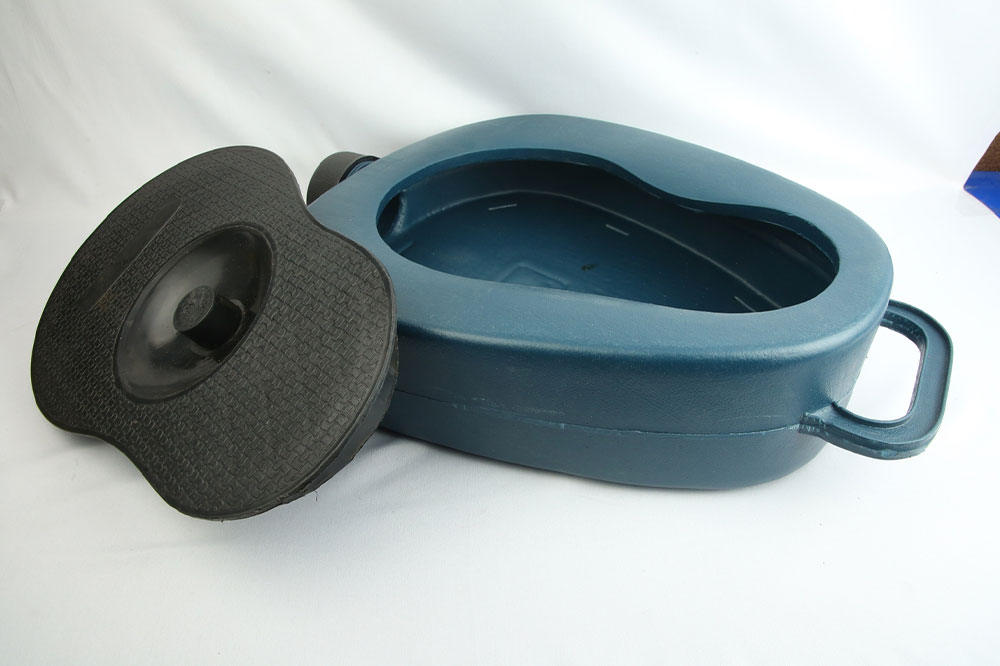
Bedpan – Uses, types, benefits, and alternatives
A bedpan is a container, often made of stainless steel or plastic. It is used to collect urine and fecal matter of patients whose mobility is affected due to an accident or illness and who find it challenging to get up and use the bathroom. Bedpans provide comfort and convenience to patients and help improve their quality of life. Read on to learn about the uses of a bedpan, its types, benefits, and popular alternatives.
What is a bedpan used for?
Specific injuries, accidents, or even old age can affect a person’s mobility, leaving them incapable of walking or standing. Doing something as simple as going to the toilet becomes daunting for such individuals. Here is where a bedpan comes in handy. The container can be slipped under the patient whenever they feel like passing stools or urinating.
Besides being useful for the injured and elderly, bedpans come in handy for people suffering from health conditions like Parkinson’s, Alzheimer’s, stroke, dementia, and bladder and bowel incontinence. Bedpans can also be used by individuals nursing a temporary injury that makes them lose their mobility, such as fractures of the lower extremities.
What are the types of bedpans?
The three popular designs of bedpans are:
Slipper bedpans
These come in round and rectangular shapes and are made of stainless steel or plastic. They easily slip under the patient without lifting or rolling them. Slipper bedpans have handles for extra comfort and convenience and a lid to cover and prevent spillages and odor.
Disposable pulp bedpans
These are made using gray paper pulp or recycled paper pulp and are great for hospitals and care homes. These bedpans are disposable and, hence, can be used for a short term only. Moreover, they need a macerator for disposal.
Commode bedpans
These bedpans can be placed under a commode chair. While some can be emptied, cleaned, and reused, others are for single use only and require a macerator for disposal.
One may also come across fracture bedpans in the market. A fracture bedpan has a tapered end that makes it easy to slide underneath a patient while seated or lying down. It is usually advised for patients who have undergone hip replacement surgery. Individuals can choose a suitable bedpan type after considering its construct and material and whether it is reusable or disposable.
What are the benefits of using a bedpan?
Bedpans are designed to prevent the soiling of bedding and bedclothes. Soiling can pose a risk of infection to the patient and others frequenting the room. It can even cause discomfort as the user has to be moved and changed. The other benefits of using a bedpan are:
Portability
Usually washable or reusable
Uses less space
Helps with hygienic disposal of waste and fecal matter
Provides comfort
Facilitates regular bowel and bladder movement
Can be used to collect specimens for diagnostic purposes
Can be used for a perineal wash
Beneficial for bedridden and chronically ill patients
What are the alternatives to a bedpan?
Here are some bedpan alternatives for patients suffering from mobility issues:
Portable urinals
Portable urinals are small containers perfect for collecting urine in the hospital and at home. They can also be used on long trips or at large events where one may have to wait in line to use the bathroom. However, these urinals are not helpful if one has to defecate.
External catheters
External catheters are a great alternative to a bedpan. But, like portable urinals, they are only meant for urinating. Catheters can be fitted for overnight use, making them suitable for those with urinary incontinence. Most designs store the urine in leg bags or bedside-mounted urinal bags.
Bedside urinals
Bedside urinals are portable urinals that can be kept near the patient’s bed. Like catheters, they have a bag for easy collection and disposal of urine. Bedside urinals can be particularly useful in cases where patients have a caregiver who helps them with their routines.
How to wash bedpans?
One should clean reusable bedpans thoroughly to reduce odor and maintain hygiene. The washing procedure may differ depending on whether the bedpan is used in a hospital or a home setting. Bedpans used in hospitals must be sterilized in an autoclave or washed in a washer to avoid cross-infection with other patients. Those used at home should be washed thoroughly with hot soapy water and a disinfectant. An anti-bacterial spray may be used to keep the bedpan free from germs and microbes.
Caregivers must respect the patient’s privacy when they use a bedpan and create a quiet setting. Because patients may unintentionally soil their bedclothes, caregivers must offer the bedpan or urinal regularly.




